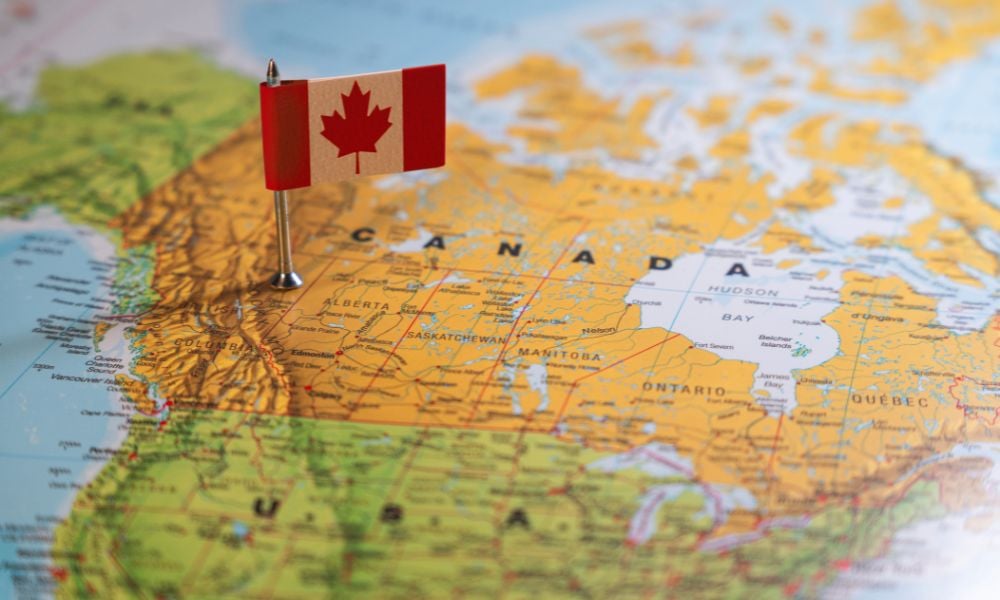Carney meets trade pledge but provinces keep barriers on dairy, mobility and language rules

The federal government has eliminated all 53 of its remaining exceptions to the Canadian Free Trade Agreement (CFTA), according to Internal Trade Minister Chrystia Freeland.
In a June 30 press release, Freeland stated that these exceptions — largely related to procurement rules — have now been removed as part of Ottawa’s commitment to dismantle interprovincial trade barriers under its jurisdiction.
The announcement arrives ahead of the July 1 deadline Prime Minister Mark Carney had set during the federal election campaign.
Carney had promised to remove federal barriers and create “free trade by Canada Day,” calling it a strategy to “create one Canadian economy out of 13” in the wake of US President Donald Trump’s trade war with Canada.
Freeland linked the removals to the recently passed One Canadian Economy Act.
She stated that eliminating all federal exceptions in the Canadian Free Trade Agreement is “one of the many recent measures we are taking... to eliminate internal trade barriers and cut red tape for Canadian businesses.”
According to the government, the removed exceptions included measures across federal procurement, transportation services, space projects, commercial land development, and financial entities.
Reviews had been conducted in stages since July 2024, with the most recent February update removing more than half the exceptions.
The final removal of all federal barriers was completed before the summer deadline.
Under Annex I and Annex II of the CFTA, repealed exceptions included legislative frameworks such as the Canada Business Corporations Act, the Investment Canada Act, and the Telecommunications Act.
They also covered future-oriented restrictions involving air and marine transport, federal infrastructure investments, and fishing licences.
Procurement-related exceptions covered entities such as the Bank of Canada, Canada Pension Plan Investment Board, and Public Sector Pension Investment Board.
Notably, exemptions also applied to the Canadian Space Agency, RCMP corporations, and services such as public relations, legal surveys, and international assistance.
Freeland acknowledged in a CTV interview that “we don’t know for sure” what the total economic benefit will be, but said economists agreed the impact will be positive.
She added: “It will make our economy stronger. It will make us richer at a time when Canadian businesses are struggling to export their goods to the US.”
Despite the federal removals, many provincial restrictions remain in place.
The CFTA committee — made up of premiers and ministers from all jurisdictions — will meet on July 8 to review provincial progress. While some provinces have entered memorandums of understanding to reduce barriers, differences in regulations, mobility, and product sales continue.
Provinces still maintain policies such as Quebec’s language rules and supply management quotas for dairy.
Experts including Ryan Manucha, author and internal trade commentator, say the changes mark the beginning rather than the end of reform.
“It’s a starting gun and it’s starting a lot more activity and work,” said Manucha, who argued that Canada’s response only accelerated due to the Trump administration’s tariffs.
He described the Carney bill’s introduction as “incredible to see” given that such an idea was “an academic theory maybe even as little as eight months ago.”
Bill C-5, the Liberals’ omnibus legislation addressing internal trade and infrastructure permitting, passed in the House on June 20 and received Senate approval on June 26.
However, an analysis by McMillan Vantage noted the law “would not achieve” full elimination of internal barriers, particularly those set by provinces.
According to Carney, the federal reforms represent a reciprocal offer.
He said the government is “getting rid of a bunch of duplicative federal regulations,” describing the move as an incentive for provinces to follow suit.
He added that “we’re going to have a principle of one project, one review — and in exchange, they’re going to agree to eliminate all the barriers to trade and labour mobility.”
As of now, provincial autonomy over labour mobility, product standards, and regulatory frameworks continues to limit the full realisation of interprovincial free trade.
Credit unions have also raised concerns that their ability to operate across provinces remains restricted despite the new legislation.



